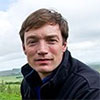The Clarkly Hill dig is done. Like the skeins of geese who’ve been flying over us for the past week, the archaeologists have migrated south to winter quarters, shaking off the mud from our boots. We’ve left the field to the whaups who’ve been crying indignantly at us since we trespassed on their land.
There’s a flurry of work still to do – tools to clean and collect, trenches to backfill, portaloos to empty – the stuff you never see in Indiana Jones … But now we need to gather our thoughts, work out what it all means, and get the behind-the-scenes stuff started. Lists to type, numbers to correlate, samples to process, finds to wash. A lot of this will happen in Moray over the next few months – thanks to the funding we got from Moray LEADER and the Baxter Foundation, we can involve local enthusiasts in this, giving them a close-up look at how archaeological interpretation works.
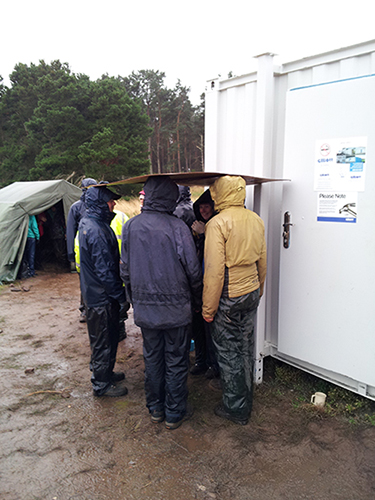
So what have we found out? There are still loads of questions turning in my mind, and I need a few days in our library to chase up some ideas and knock the edges off some of my crazier interpretations. But it’s clear we’ve got a really long-lived site here – this was one of THE places to be in Moray. The oldest finds go right back to the Mesolithic, about 6,000-8,000 years ago, when a scatter of flints suggests that a band of hunter-gatherers visited here – perhaps just for a few days, perhaps regularly over several generations. I’m sure they were drawn here because it sat beside a loch which is now drained – in deep prehistory, this was a ready larder, with food there for the taking.
The most unexpected find was part of a circular enclosure with settings for stones, and a couple of massive plough-scarred boulders. I reckon this is the remains of a stone circle, dating back about 4,000-5,000 years – but I need to go and interrogate some of my prehistorian colleagues before sticking my neck out too far on this!
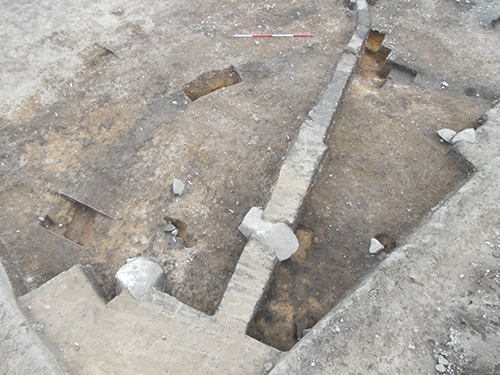
Stone circles (if that’s what this is) are very rare in Moray, so this would be a major addition to our knowledge. There’s certainly other stuff of this date – we also found a standing stone which had been deliberately taken down, and I wonder if these marks of an ancient past encouraged people to settle here in the Iron Age – there’s nothing like taking over an ancient site to show how important and well-connected you are.
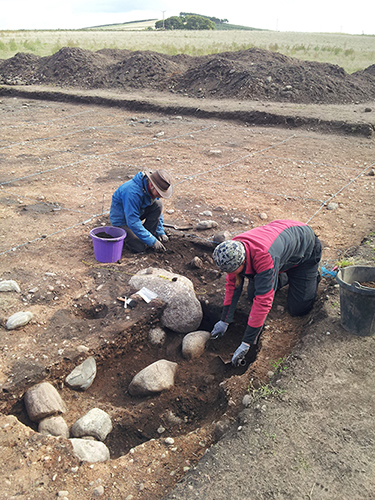
Our massive roundhouse threw up some lovely surprises. The big black crescent which shows so clearly on the photos is a hollow where animals were kept, with traces of fences to guide cattle and sheep around the interior. A dark layer at the base is a gold mine for us – it’s sealed by later activity, and must be linked to the use of the house. There’s been a long debate over what these houses were used for – now the samples we’ve taken should help us answer this. We’re hoping for traces of prehistoric cow dung – again, not the sort of thing which Indiana Jones would get out of bed for. Our star find from here is also minor league by his standards, but we’re chuffed – it’s a lovely spiral bronze finger ring, confirming that our house was in use around 2000 years ago.
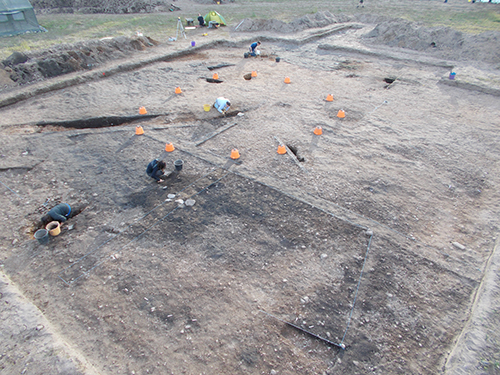
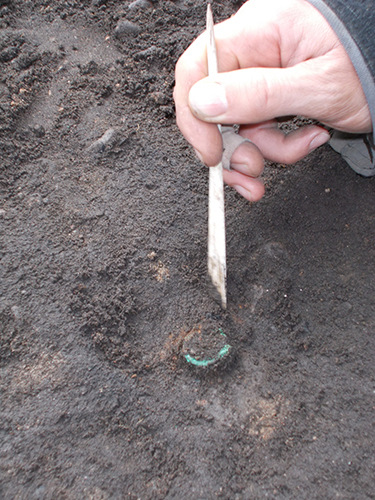
Our other trenches will need radiocarbon dates before we can put them in their rightful place. One produced a metal-worker’s workshop, either Iron Age or Pictish in date. Finds included a clay doughnut which acted to shield the skin of the bellows from the heat of the fire – a vital tool but a rare find.
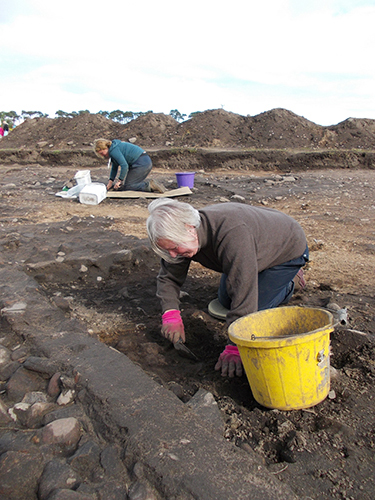
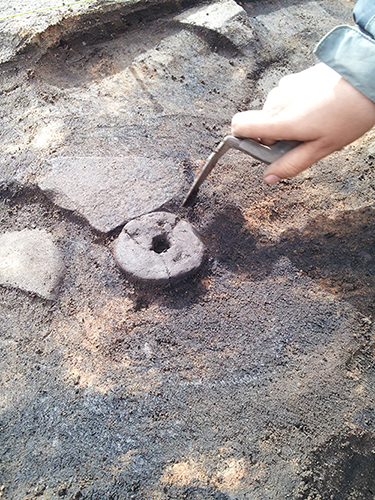
Another trench produced a very odd building – a squashed oval shape, its interior dominated by a massive sandstone slab over a metre across, which acted as a hearth. It’s much bigger than even the hungriest family would need – was this a special building for preparing feasts at ceremonies? And what date is it? I’ve been flicking through mental images, trying to find something similar, but it’s tricky – could be anything from Neolithic to Pictish, so we need to go and raise money for radiocarbon dates to find out.
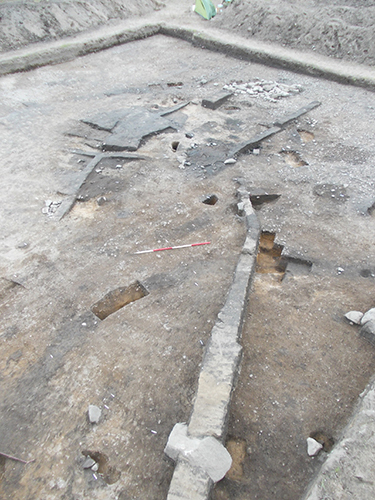
That’s the great thing about archaeology – finding the unexpected. We got more of the story we were looking for, about the Iron Age and the Pictish period, but we got far more besides – a glimpse into lost worlds. Now for a winter of reading and head-scratching as I try to make sense of it all.
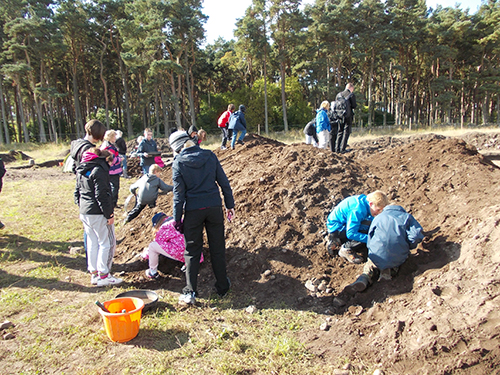

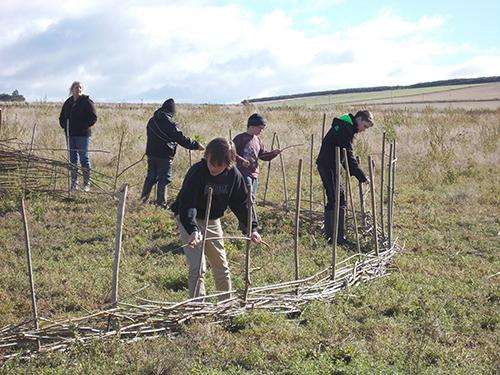
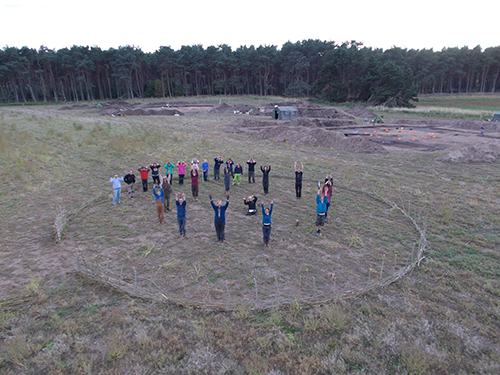
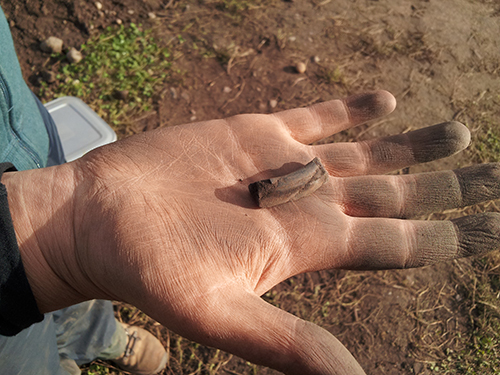
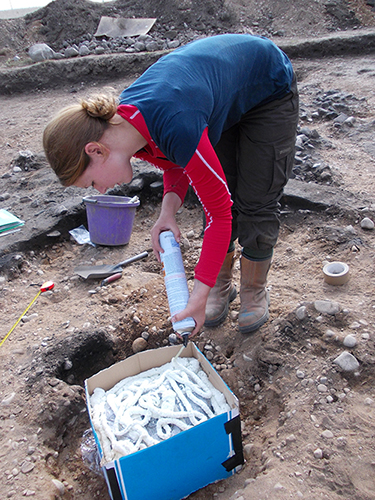
You can read more about the dig in Fraser’s first and second blog posts about Clarkly Hill.
